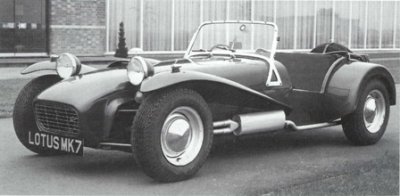(Editor’s Note:) At Car-Revs-Daily.com, we enjoy having the chance to not only help contributors of all types have the opportunity to showcase their work on a unique and growing platform, but to also occasionally help their respective websites as well. In this regard, we recently collaborated with Emily Blakowski (an aspiring book reviewer when she is not assisting the Detroit office with audiophile things) and challenged her to review a selection from the Car-Revs-Daily Metro Detroit archives (which can be seen below.) Please enjoy, and let us know if you want to see more – Regards Carl Malek
Ever since I started this page, people have encouraged me to read novels that I would not normally read in my spare time. So, when I was approached by Car-Revs-Daily.com to review a book from their Metro Detroit archives, I was eager to accept the challenge head on. Caterham Sevens: The Official Story of a Unique British Sportscar From Conception to CSR by Chris Rees is so out of the ordinary for me, that I needed to read it in order to maintain my status as a person who reads everything. The book itself details the history of the Caterham Seven – a British car that people can drive both leisurely as well as on the race track. Even though the book possesses clear appeal to car fanatics, I am not sure that it attracts all readers.
A common description of this book as seen on many book seller websites is that it is the standard book on the history of Caterham, and it’s not hard to see why. Rees discusses the history of the Caterham Seven from its inception as the Lotus Seven by owner and engineer Colin Chapman in 1957, to when former Lotus dealer Graham Nearn of Caterham Cars bought its manufacturing rights in 1973, up to when Caterham Cars was sold to the Corven Ventures in 2005. Along with this detailed history, Rees covers how to buy and restore a Seven, as well as the popularity of the Seven in international markets like France and Japan. In addition, Rees talks about the various Caterham Seven models, but reviewers have noted that his other book The Magnificent 7: The enthusiasts’ guide to all models of Lotus and Caterham Seven goes into more detail about those models. He also provides both black and white as well as color pictures all across the book, even though their descriptions can be a bit wordy at times. I can definitely however see the extensive research and care that Rees put into this in order to make the history of this unique vehicle feel complete and accurate.
However, since I would not describe myself as a car enthusiast, I could not connect to it as much as I had hoped. This is because Rees uses a more car-oriented language for his readers. For example, here is an excerpt about a Supersport engine package (as imagined with a Jeremy Clarkson voice):
“As a £998 aftermarket option, there was once again a Supersport engine package, developed by Rover especially for Caterham. The Supersport’s revised engine management control and uprated camshafts provided high-revving extra power – now rated at 138bhp at 7,000 rpm (10bhp more than the 1.4 Supersport). The 138bhp output was in race spec without catalyst; the road-going figure with catalyst was 133bhp. As with the 1.4 Supersport, there was a gear change warning light that came on at 7,400rpm, 200 rpm below the rev-limiter” (104).
At this point, I am sure that someone reading this will say that well bhp is brake horse power, rpm is revolutions per minute, and explain what camshafts are, but the point is, I could not have figured those items out on my own.
Despite his car-centric language, Rees fortunately tries to connect to wider audiences with effective results. A good example of this would be the Lotus Seven S2’s appearance in the cult 1960s British Television series The Prisoner starting Patrick McGoohan. It was the car that McGoohan’s character drove, specifically in the opening credit sequence. Rees hammers in the point of its pop culture significance, especially when he gives a few pages to when Caterham launched a limited-edition Seven called the Prisoner in 1989 (pictured.) And yes, McGoohan himself endorsed it. Although I have never heard of that show, I could understand the car’s widespread popularity because of it. This particular story was easily the best part of the book.
Overall, I can see why car aficionados – both general and fans of Caterham Sevens – would enjoy Caterham Sevens: The Official Story of a Unique British Sportscar From Conception to CSR. It provides a breadth history of this particular automobile, while also covering its various iterations and international popularity. On the other hand, it can alienate readers who are not well-versed in car lingo. If anything, I would recommend it to car lovers who are interested in learning more about the Caterham Seven and its uniqueness as a British sports car, or to an owner looking to learn more in-depth facts about their Caterham Seven.
For more of my reviews please check out my Facebook page below, and if you have any book suggestions (automotive or otherwise) please send me a message and I will do my best to accommodate your request.
https://www.facebook.com/readseverything










